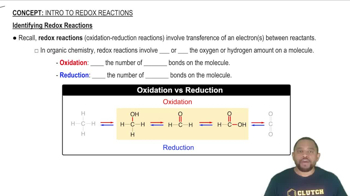Here are the essential concepts you must grasp in order to answer the question correctly.
Oxidation States
Oxidation states indicate the degree of oxidation of an atom in a compound. In this context, vanadium in the +2 oxidation state means it has lost two electrons. Understanding oxidation states is crucial for predicting the behavior of elements in redox reactions, as they determine whether a species can gain or lose electrons.
Recommended video:
Reducing Agents
A reducing agent is a substance that donates electrons in a chemical reaction, causing another species to be reduced. When a compound has a lower oxidation state, like vanadium in +2, it is often a good reducing agent because it can easily lose more electrons to achieve a higher oxidation state, thus facilitating the reduction of other substances.
Recommended video:
Oxidizing and Reducing Agents
Redox Reactions
Redox (reduction-oxidation) reactions involve the transfer of electrons between two species, where one is oxidized and the other is reduced. The ability of a compound to act as an oxidizing or reducing agent is determined by its oxidation state and electron affinity. In this case, vanadium in the +2 state is likely to act as a reducing agent, as it can donate electrons to other species.
Recommended video:
Identifying Redox Reactions





